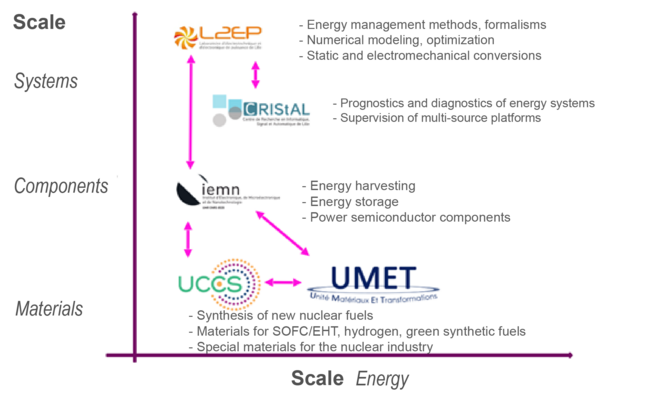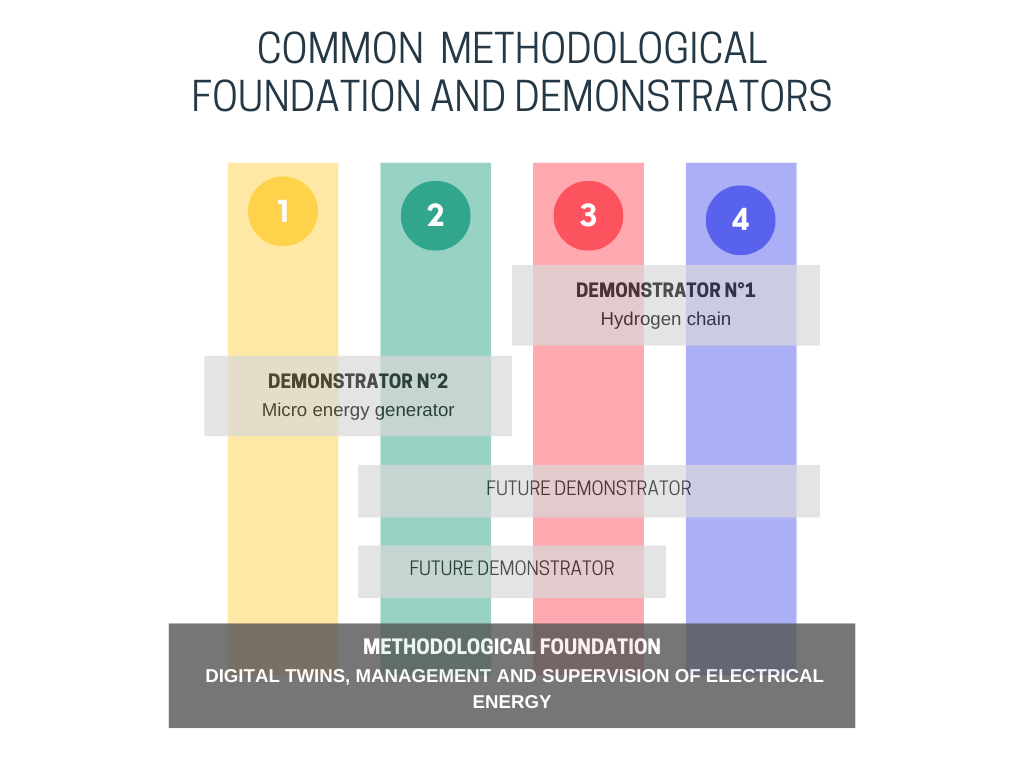General introduction
In 2020, researchers and faculty members working on the theme of "energy" came together at the University of Lille. An initial assessment of the available resources revealed that numerous laboratories located at the Faculty of Science and Technology of the University of Lille in Villeneuve-d'Ascq were working on the same theme. Supported by ISITE ULNE (I-SITE: Label of University Excellence - University Lille Nord-Europe), the COMASYS project, "Continuum of Energy: From Materials to Systems," was then launched during the 2021-2022 academic year.
This project leverages the expertise of multiple laboratories to provide a distinct identity and visibility to the Lille hub. COMASYS brings together eight technical platforms and facilities at the University of Lille:
- Institute of Research on Software and Hardware Components for Advanced Information and Communication (IRCICA)
- Textile Materials Engineering (GEMTEX)
- Materials and Transformations Unit (UMET)
- Michel-Eugène CHEVREUL Federation
- Institute of Electronics, Microelectronics, and Nanotechnology (IEMN)
- Polytechnic University School of Lille (POLYTECH LILLE)
- Catalysis and Solid Chemistry Unit (UCCS)
- Laboratory of Electrical Engineering and Power Electronics (L2EP)
These laboratories cover various themes such as materials, components, and systems, addressing different needs at multiple scales, including electrochemical energy storage, energy recovery, energy management, nuclear energy, hydrogen production, and the production of fuels or value-added molecules from renewable energy sources.
Diagram showing the positioning, on the energy scale, of the relationship between different laboratories and the scales at the materials, components, and systems levels. Thus, at the materials level, UMET and UCCS are working on the synthesis of new nuclear fuels, materials for SOFC/EHT, hydrogen, and green synthetic fuels, as well as special materials for green hydrogen. At the components level, IEMN is focused on energy recovery, energy storage, and power semiconductor components. Finally, at the systems level, CRiSTAL is involved in prognosis and diagnosis of energy systems (heat pumps) and the supervision of multi-source platforms. On the same scale, L2EP is working on energy management methods, formalisms, numerical modeling, optimization, and discussions at the static and electromechanical levels.
COMASYS is structured around 4 thematic pillars, supported by a common methodological foundation and different proofs of concept.
Each thematic pillar ensures the "Energy Continuum":
Pillar 1: Energy Recovery and Storage
Pillar 2: Manufacture of high-performance micro-energy storage devices for future connected objects
Pillar 3: Production and valorization of hydrogen
Pillar 4: Advanced modular nuclear reactors
Illustration depicting the project's four pillars, built upon a shared methodological foundation that encompasses digital twins, electrical management, and supervision. Pillars 3 and 4 have a joint demonstrator centered around the hydrogen chain. Meanwhile, pillars 1 and 2 share a common demonstrator, expected to function as a macro-energy generator. Additionally, future demonstrators are in the works: one connecting pillars 2 and 3, and another linking pillars 2, 3, and 4.



